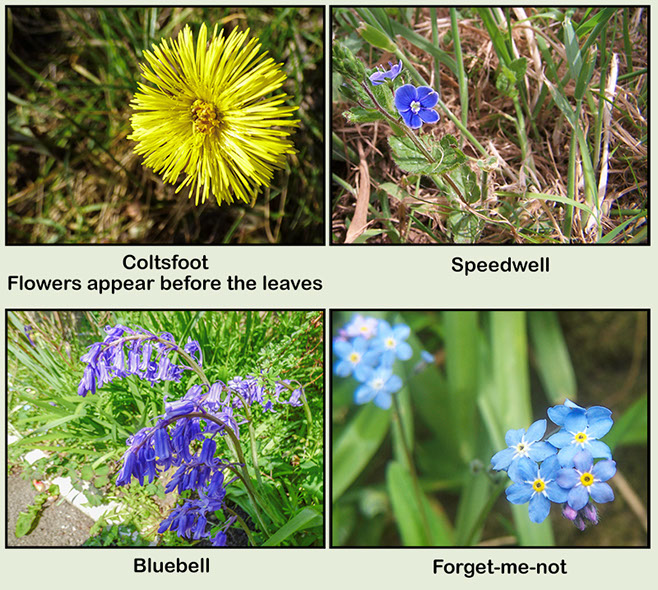

Home
About Us
Garden Diary
Weather Diary
Allotments
Garden Equipment
Seed Suppliers
Manure Problems
Children's Pages
GLA Blog
Weather Blog
School Veg Patch
Useful Links
Wild Flowers on Derelict Plots
When many of the plots were overgrown and uncultivated, it was surprising how many wild flowers were flourishing there.

The photographs in the slide-show below were taken during this period. I suppose that they would be classified as weeds but they certainly added a bit of colour.
How many can you recognise? Warning - the slide-show has a musical accompaniment.
I have tried to identify as many of the flowers as I can with varying amounts of success. In the order that they appear in the film, I think they are:
- dandelion - I'm sure of that one - we have plenty of them on the plot. Apparently you can cook the leaves or use them in salads. You can also make some sort of coffee out of the dried roots. I haven't tried any of this though. It's name is supposed to be derived from the French dent de lion (lion's tooth) although the French have a completely different name for it pissenlit (guess what that means) due to the fact that it is a diuretic!
- groundsel - I have often noticed a rusty sort of fungus growing on this plant. They are often covered with black and yellow stripy caterpillars. These are Cinnabar Moth caterpillars and were introduced to try and control ragwort which they also feed on.
- ragwort - this is poisonous to livestock. The insect on the plant is a ladybird larva.
- creeping buttercup - another common one on the plot. Like all buttercups it is poisonous.
- Yellow mystery plant see photo on the blog . I can't find a photo of it anywhere and have no idea what it is.
- cow parsely
- elderflower - has a lovely scent and you can use the flowers to make wine. Apparently folklore says that if you burn elder wood you will allow bad spirits into your home so be warned - no putting it on your open fires!
- daisy - apparently the name comes from day's eye, another one that you can eat the leaves of! Good for making daisy chains too as there are plenty growing in lawns and other grassy areas.
- hedge bindweed - it was introduced as an ornamental plant and is very striking but an absolute nightmare to get rid of. Any tiny piece of root left in the ground will grow and spread everywhere!
- dog rose - the fruit or hip of the dog rose is supposed to be high in vitamin C and used to make rose hip syrup, tea and marmalade.
- white or Dutch clover - unfortunately I didn't find one with four leaves!
- red clover - a good fodder plant for cattle and produces really good honey with a little help from the bees!
- rosebay willowherb - loves ground where there has been a fire. It is sometimes called the railway flower as it grows on railway embankments and produces lots of fluffy seeds.
- cut leaved cranesbill - cranesbills get their name from the fact that their seed heads look like a crane's beak
- spear thistle
- red dead nettle (I think) - this nettle doesn't sting hence the name dead nettle
- bugle - there's about 50 different varieties of bugle - haven't a clue which this is - have you?
- speedwell - there are dozens of varieties of speedwell - not sure which these are - maybe two different types. I
- vetch
- stinging nettle - apparently another one where you can eat the young shoots. Nettles provide food for lots of different caterpillars - so it is good to leave a clump growing on the plot if you want to see lots of butterflies.
- white dead nettle - another non-stinging friendly nettle. The young leaves are edible, and can be used in salads or cooked
- field poppy and seed heads - these appear to be making a come back in many fields around Wakefield
Sadly now all most of the plots are being cultivated most of the wild flowers shown in the photographs have disappeared.
Although, now it is a good thing not to have so many derelict plots, it is sad to see the wild flowers disappear.
Our Plot at Green Lane Allotments Blog | A Gardener's Weather Diary | School Vegetable Patch Website
© Our Plot on Green Lane Allotments - Please email me if you wish to use any of this site's content